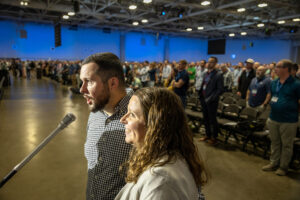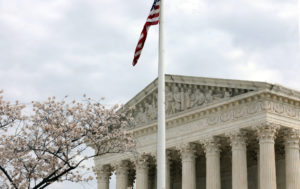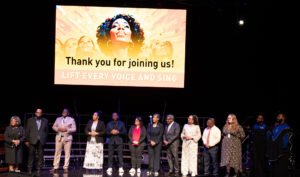
NASHVILLE, Tenn. (BP)–The percentage of U.S. high school students who say they are virgins rose to 54.1 percent during the 10-year period of 1991-2001 from 45.6 percent, according to data released by the Centers for Disease Control and Prevention Sept. 27.
The percentages were reversed a decade earlier, the CDC reported.
According to another study, meanwhile, teens who engage in first-time sexual intercourse most commonly do so in one of their parents’ homes. The finding was reported by Child Trends, a nonprofit research organization based in Washington, D.C.
CDC figures for the increase in virginity show the trend occurring among both female and male students, among 10th-, 11th- and 12th-grade students and among black and white students, according to an analysis of 10 years of data from the CDC’s Youth Risk Behavior Survey (YRBS) of more than 10,000 high school students.
Various decade-long improvements in teen sexual risk behavior noted by the CDC are parallel to decreases in the rates of gonorrhea, pregnancy and birth rates among adolescents, said Lloyd Kolbe, who directs CDC’s adolescent and school health program.
“Although we can’t point to a single reason for these improvements, we think they are due to the combined efforts of many people — youth themselves, parents and families, schools, community organizations that serve young people, healthcare organizations, faith-based organizations, the media and government agencies that work to reduce sexual risk behaviors among young people,” Kolbe said in a CDC news release.
As The New York Times assessed it, “Most experts say the decline in sexual activity can be attributed to a combination of factors, from abstinence programs and fear of AIDS to an increase in oral sex, which many teenagers regard as both less dangerous and less intimate than intercourse.”
The first-time locations for teens age 16 through 18 engaging in sexual intercourse, according to Child Trends, were the teen’s home, listed by 22 percent from a National Longitudinal Survey of Youth, or the home of the teen’s partner, listed by 34 percent.
Other locations and percentages: friend’s house, 12 percent; “someplace else,” 10 percent; partner’s apartment or dormitory room, 9 percent; a car or truck, 4 percent; teen’s own apartment or dorm room, 4 percent; a park or other outdoor place, 3 percent; a motel or hotel, 3 percent.
Child Trend’s president, Kristin Moore, said in an interview with The New York Times, “Parents need to be more open to the possibility that kids are more sexually active than they would like to believe, and to monitor more and communicate more.”
Moore noted that various studies have found that only half the parents of kids who have had sexual intercourse were aware of it.
The CDC survey also reported:
— Among all sexually active students (those who had sexual intercourse during the 3 months prior to the survey), condom use increased from 46.2 percent in 1991 to 58.0 percent in 1999, then leveled off at 57.9 percent by 2001. A similar increase followed by a leveling off was seen among female students, 10th and 12th grade students, and black students. Among male students, 9th and 11th grade students, and Hispanic and white students, condom use increased throughout the 10-year period.
— The percentage of high school students reporting multiple sex partners (defined as four or more) declined overall from 18.7 percent to 14.2 percent from 1991-2001 and among male students, 11th and 12th grade students, and black and white students.
— There was an increase from 21.6 percent to 25.6 percent in the prevalence of alcohol or drug use before intercourse among sexually active students.
–30–













